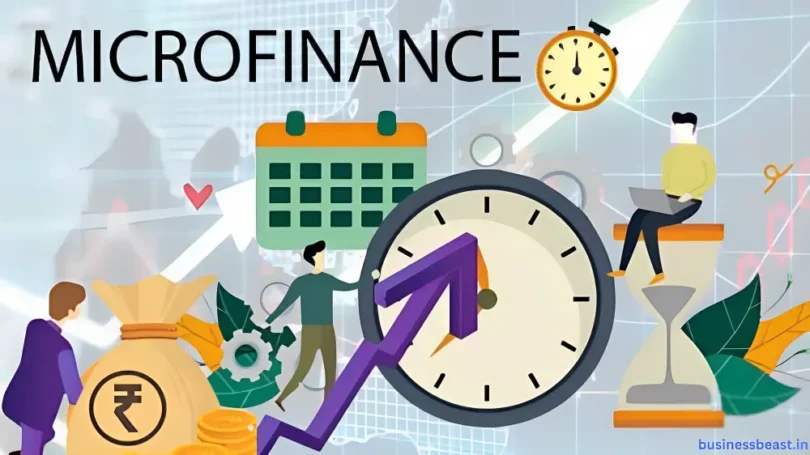In a world where many people still struggle to access financial opportunities, microfinance loans have emerged as a beacon of hope. They promote entrepreneurship and give members of marginalized communities access to capital. Traditional banking systems usually overlook marginalized populations due to their stringent requirements; however, microfinance loans offer a lifeline to those attempting to improve their financial circumstances. This article examines the principles of microfinance loans and their impact on individuals and communities.
What are Microfinance Loans?
As the name implies, microfinance loans are small-scale financial instruments made available to people and businesses that would not normally be able to access traditional banking systems. People with limited financial resources, particularly those living in underserved or low-income areas, can use these loans to start or grow small businesses, pay for emergencies, or make investments in healthcare and education.
Types of Microfinance Loans in India
- Education loans: The purpose of education loans is to assist borrowers in meeting the educational needs of their children. Tuition, books, uniforms, and other educational expenses are covered by these loans.
- Emergency loans: Emergency loans, which are available year-round to cover unforeseen costs like funeral or medical emergencies, have no interest. They offer prompt financial support in unexpected situations.
- Income generation loans: The goal of these Income generation loans is to aid in the development and expansion of microenterprises, or small businesses. Based on the borrower’s capacity to repay the loan and the needs of the company, the loan amount is decided.
- Individual loans: Borrowers who are able to furnish collateral and a guarantor are granted individual loans. Prior to disbursement, a thorough assessment of the borrower’s business and cash flow is conducted for loans, which are given outside of the group lending process.
- Mid-term loans: The borrowers may be qualified for mid-term loans after they have successfully returned their income-generating loans for a predetermined amount of time. The borrower and the microfinance institution (MFI) agree on the repayment terms for these loans, which typically represent the remaining balance of the income-generation loan.
- Agriculture loans: Loans for agriculture are specifically designed for farmers and other agriculturally oriented individuals. In order to improve crop quality and yield, they offer financial support for the purchase of necessary supplies like seeds, fertilizer, livestock, or farming equipment.
- Dairy cattle loans: With the goal of raising their income levels through increased milk production and better dairy farming techniques, dairy cattle loans assist people in buying new cattle or improving their current dairy farming operations.
- Consumer product loans: Consumer product loans give borrowers access to necessary products by allowing them to buy necessities like cookstoves, cell phones, or solar lights that enhance their quality of life.
Benefits of Microfinance Loans
- Empowerment of Entrepreneurs: Aspiring entrepreneurs can be empowered by microfinance loans, which is one of their main advantages. These loans give people the ability to launch or grow their businesses, which in turn promotes local economic development and the creation of jobs. With the aid of these loans, entrepreneurs can invest in equipment, buy inventory, or increase their capacity for production.
- Financial Inclusion and Poverty Alleviation: By bridging the gap between the unbanked and the formal financial sector, microfinance is essential to the advancement of financial inclusion. Microfinance firms help to reduce poverty by providing easily accessible credit to those who need it. By using these loans to pay for necessities like housing, healthcare, and education, many borrowers raise their standard of living.
- Flexible and Accessible: Microfinance loans are renowned for their adaptability with regard to loan purposes and payback schedules. In order to ensure that loan repayments match their income, borrowers are frequently free to select a loan term or tenure that best fits their cash flow. Furthermore, a broad spectrum of people can apply for microloans; these include women, people of color, and residents of isolated or rural areas where access to traditional banking services may be limited.
Eligibility Criteria for Microfinance Loan in India
- No existing loan from other MFIs: When you apply, make sure you haven’t taken out a loan from another microfinance institution (MFI). This makes sure you don’t have more debt than you can handle at once.
- Pending loan amount limit: Verify that the total amount of loans you have on hold from all sources—including other MFIs—does not exceed one lakh rupees. This makes sure that the debt you have right now is manageable.
- Employment and steady income: You ought to be a professional in the workforce making a consistent living. This proves your creditworthiness and shows that you can repay the loan.
- Relevant documents: Make sure you are prepared with all the paperwork needed for the loan application process. These could include bank statements, identification documents, proof of address, proof of income, and any other documents the MFI specifies.
- Bank account: Make sure your bank account is open and active. Since it makes loan disbursement and repayment transactions easier, most microfinance loans require the existence of a bank account.








Leave a Comment